For some reason I always seem to be drawn to the reptile displays when I visit zoos and similar facilities. Maybe it is their dinosaur-like appearance or some deep, primal fear I have that causes me to be intrigued. During a recent visit to Alligator Adventure in Myrtle Beach I spent some time photographing reptiles behind glass enclosures in one of the display buildings.
NOTE: Click on images to enlarge.
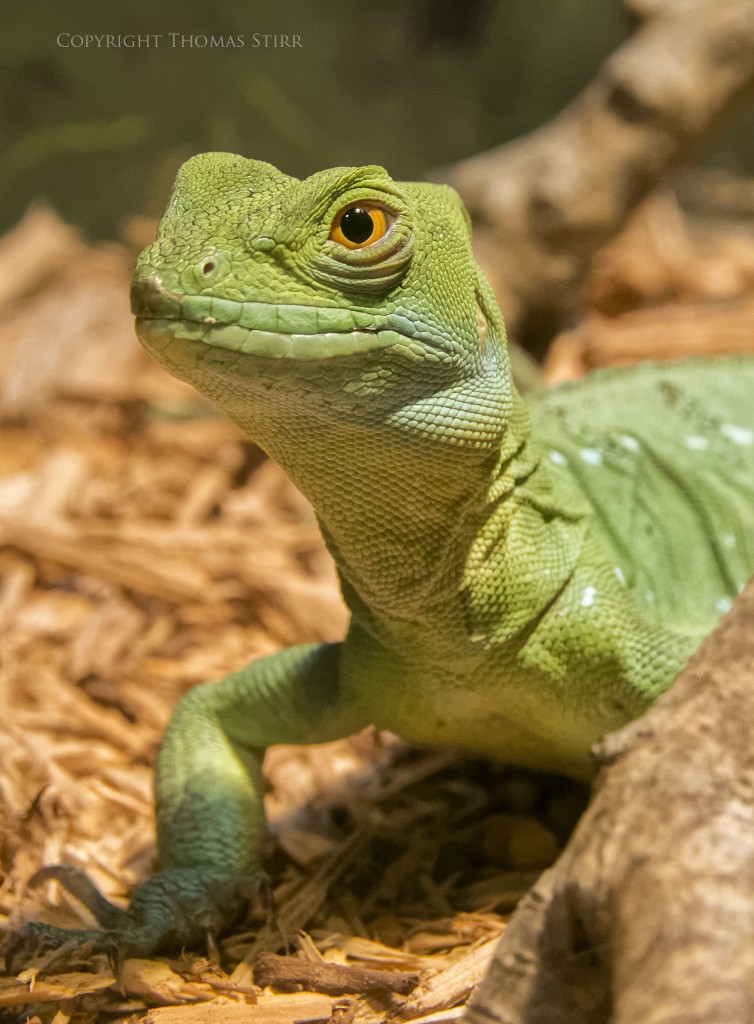
Although I forgot to capture the diplay signs for all of the specimens I photographed, I did remember to get the names of quite a few more species, like the Green Basilisk above.
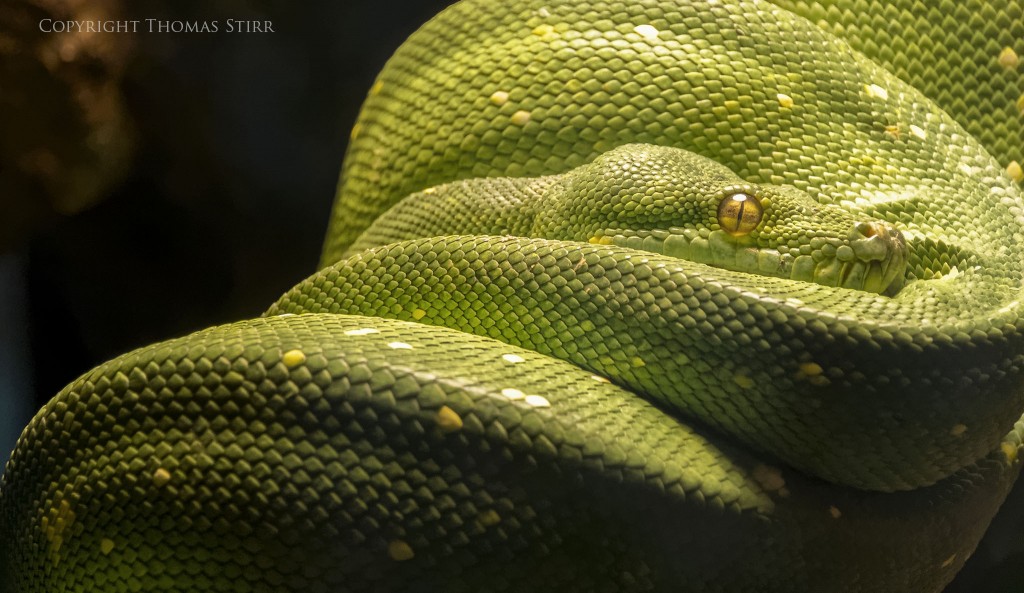
As you look at the EXIF data for the images you’ll notice that I used exposure compensation on some of the photographs and not others. This was really dependant on the lighting in each display case and the position of the specimen. In cases where the reptile had strong highlights, thus increasing the risk of blowing out details, I applied some exposure compensation.
Due to the darker conditions I shot the images in this article at between ISO-1000 and ISO-6400, with the majority not exceeding ISO-3200. Most of the time I used decent shutter speeds ranging from 1/30 to 1/60 with a few at slower shutter speeds, one at 1/8.
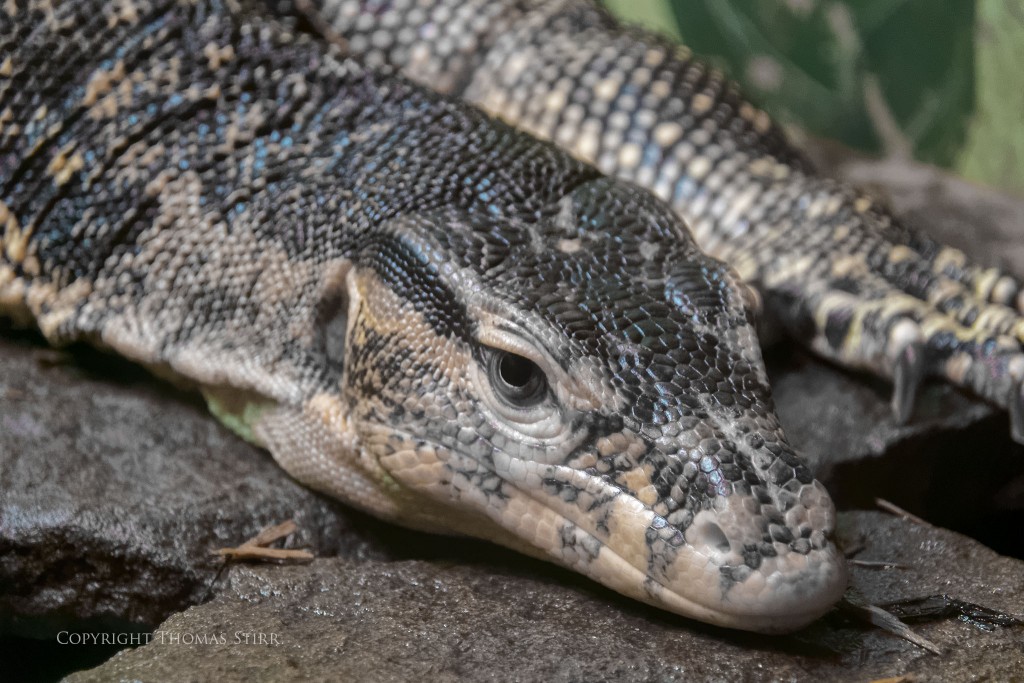
Some of the specimens were under very strong, red heat lamps. This caused the images I captured to have an overall reddish cast as well as have bright red highlight areas. This was the case with the image above and directly below. I went into the hue settings in CS6 and make some hue adjustments, especially with the red hue to try to make the images usable for this article.

During a previous visit to this same display building in 2015 I shot all my images with the 1 Nikon 70-300 mm f/4.5-5.6 lens. Since I added a 1 Nikon 10-100 mm f/4-5.6 to my kit I brought this lens with me during my recent visit. I found that it was actually a better lens choice for many of the image opportunities in this particular venue due to its shorter minimum focusing distance.
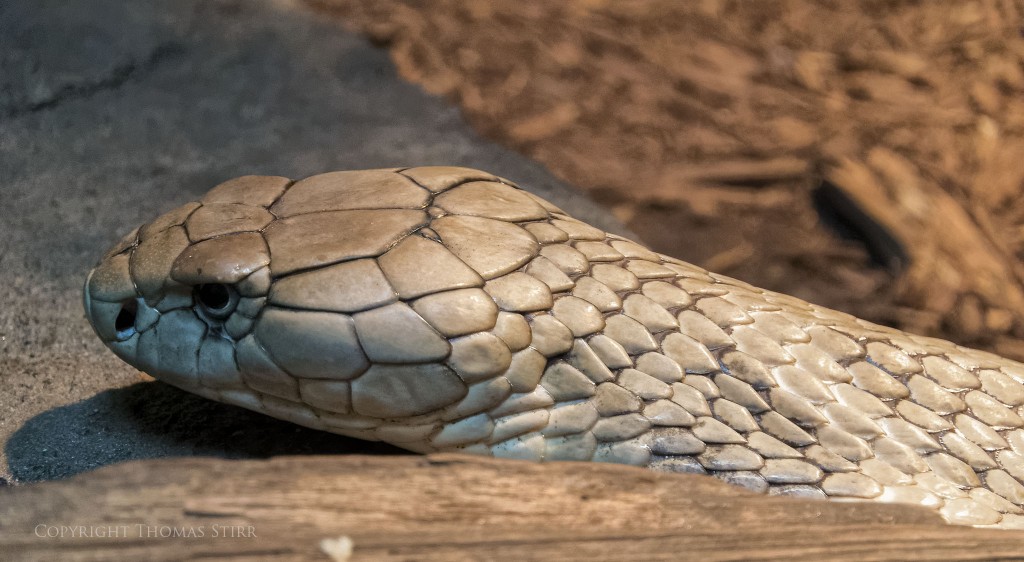
The 1 Nikon 10-100 f/4-5.6 allowed me to shoot much closer to the glass of the enclosures, sometimes with my lens right up against the surface. This helped improve image quality as the effects of soiled glass partitions could be reduced.

At you can see in the above image I still had to shoot at a distance away from the glass from time to time. As a result the dirt on the glass is still noticeable, even though I removed the worst of it with the spot removal tool in CS6.
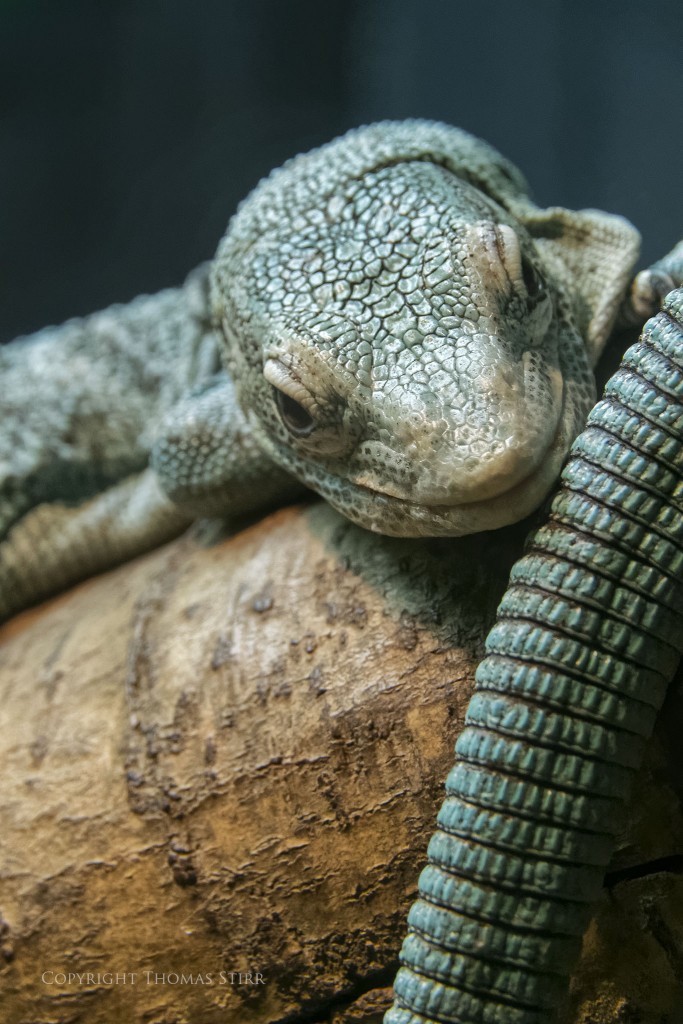
Often when photographing display enclosures containing multiple specimens I look for opportunities to compose images to take advantage of natural body positions or use other individual specimens to create a ‘magic 7‘ as in the above image, corner exists or leading lines in the images.

While many photographers like to capture entire specimens I much prefer creating images focusing on the heads of lizards and snakes. I love the level of detail that can be captured, finding that it helps to make the images more visceral.
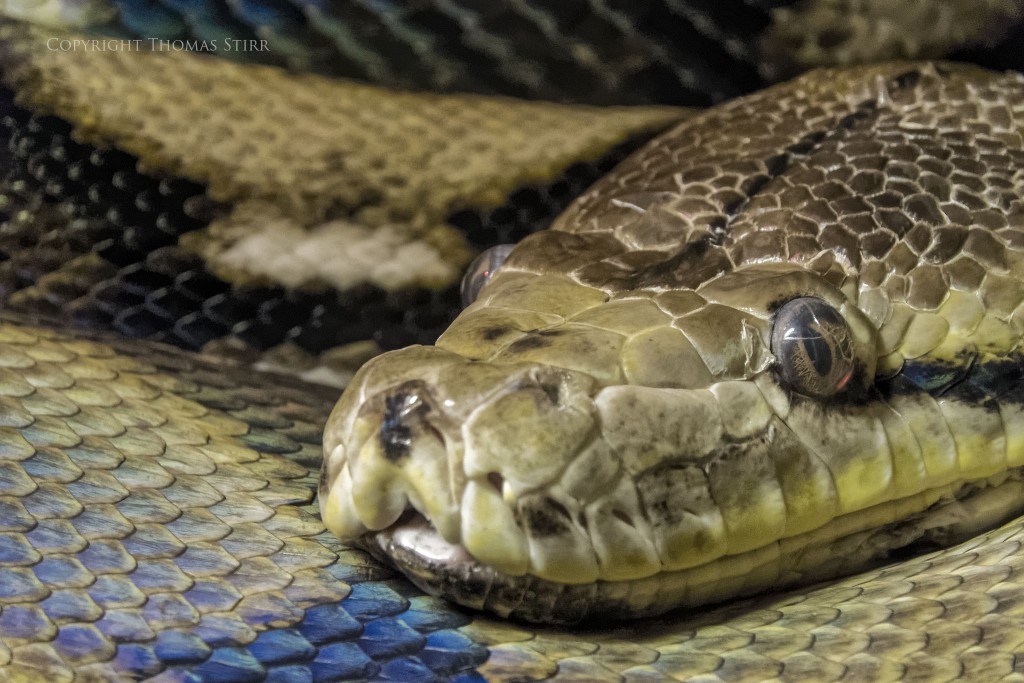
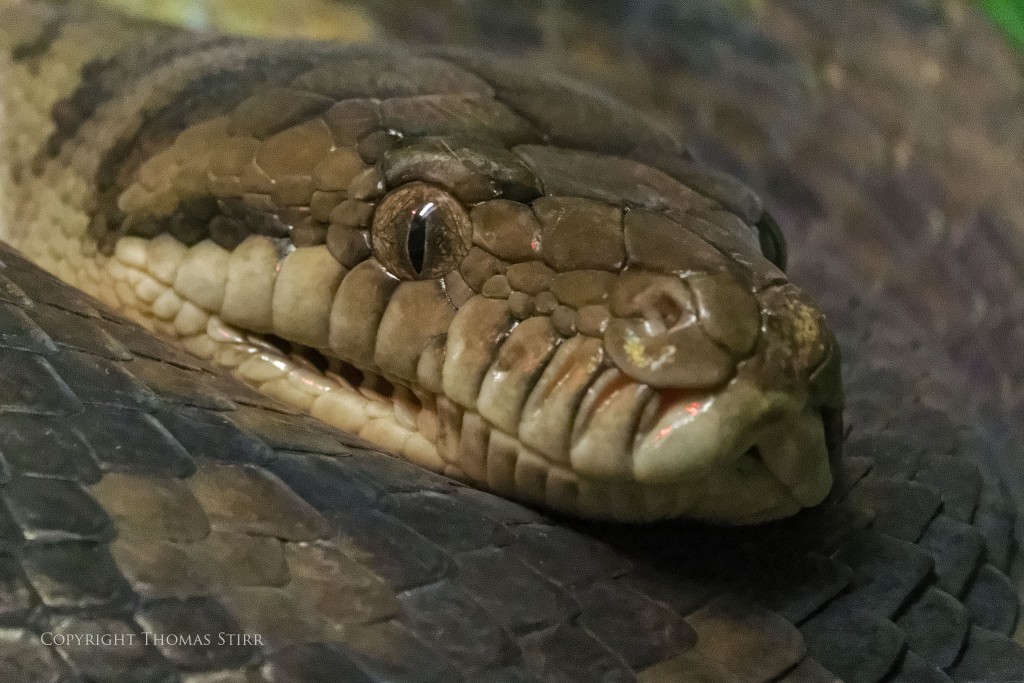
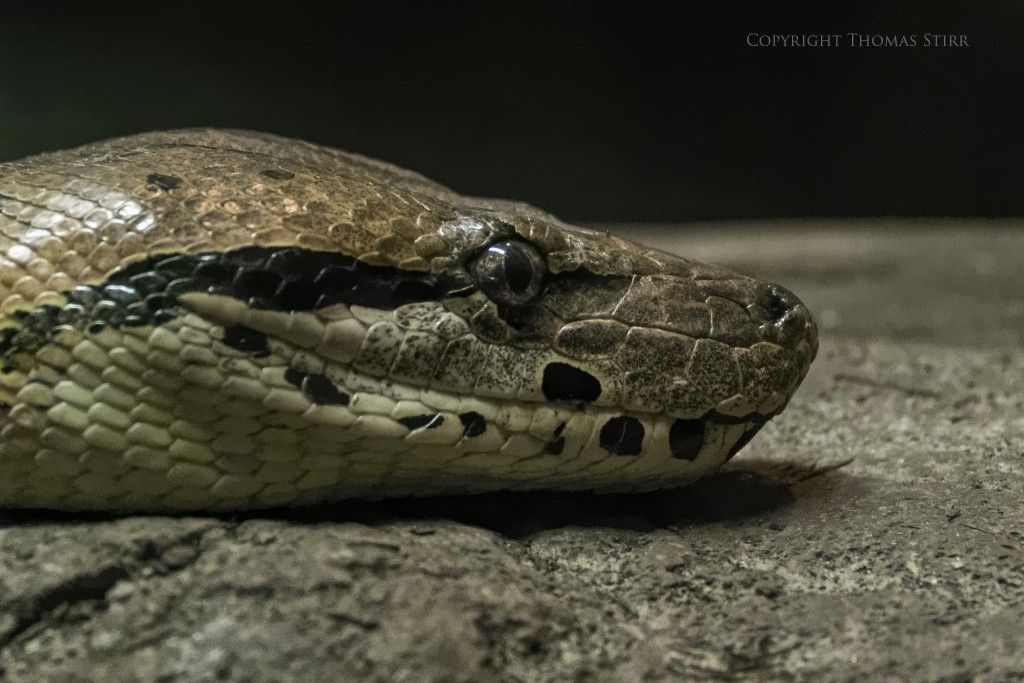
I find the texture of the skins of reptiles like lizards and snakes quite intriguing and I spend a bit more time in post trying to bring out this texture. It is always good to remember that edge acuity is one of the factors that our eyes use to judge ‘sharpness’. There are adjustments in post, other than sharpness, that can help enhance edge acuity.
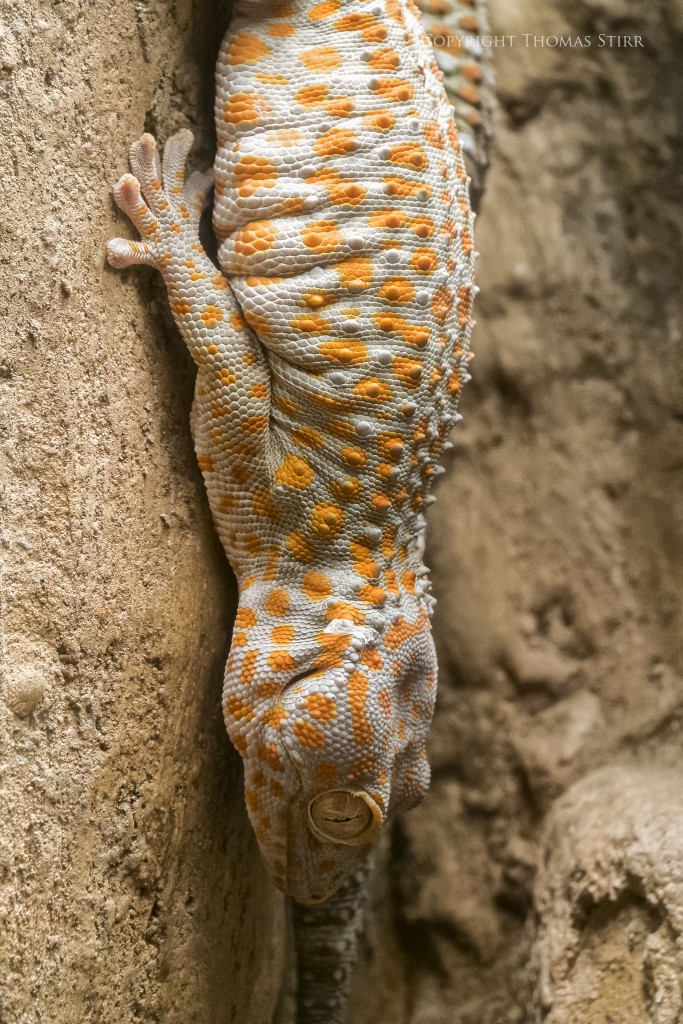
Everyone has their own approach with post processing, and what one person chooses to do may not be what another person does.
I did not add any sharpness when processing my reptile images beyond what I normally do with my Nikon 1 files. Instead I tend to darken highlight areas, use contrast and micro-contrast adjustments, as well as utilize black and white sliders to try to enhance edge acuity. I’ve found it can also be helpful to use settings similar to the ‘clarity’ one found in CS6.
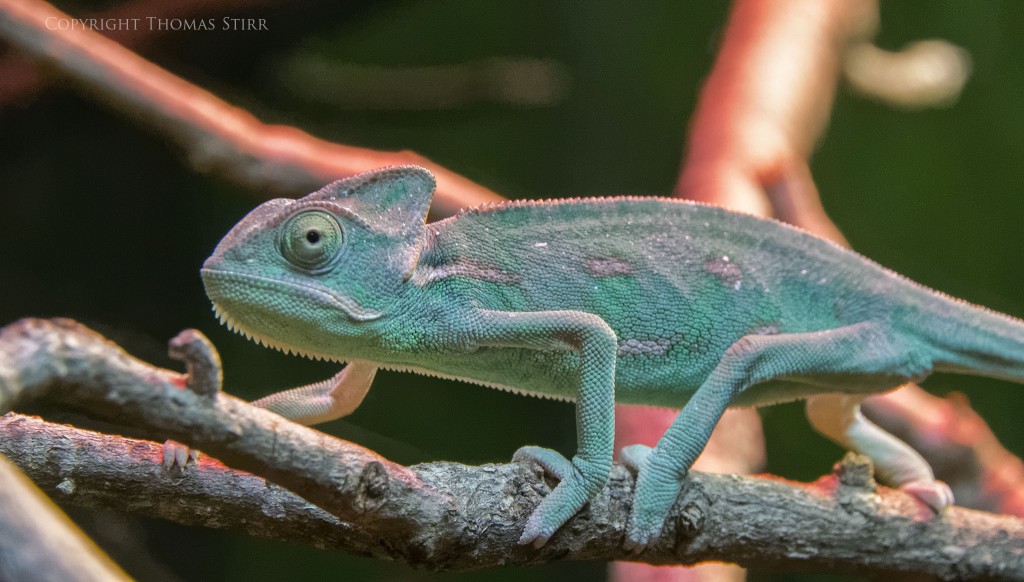

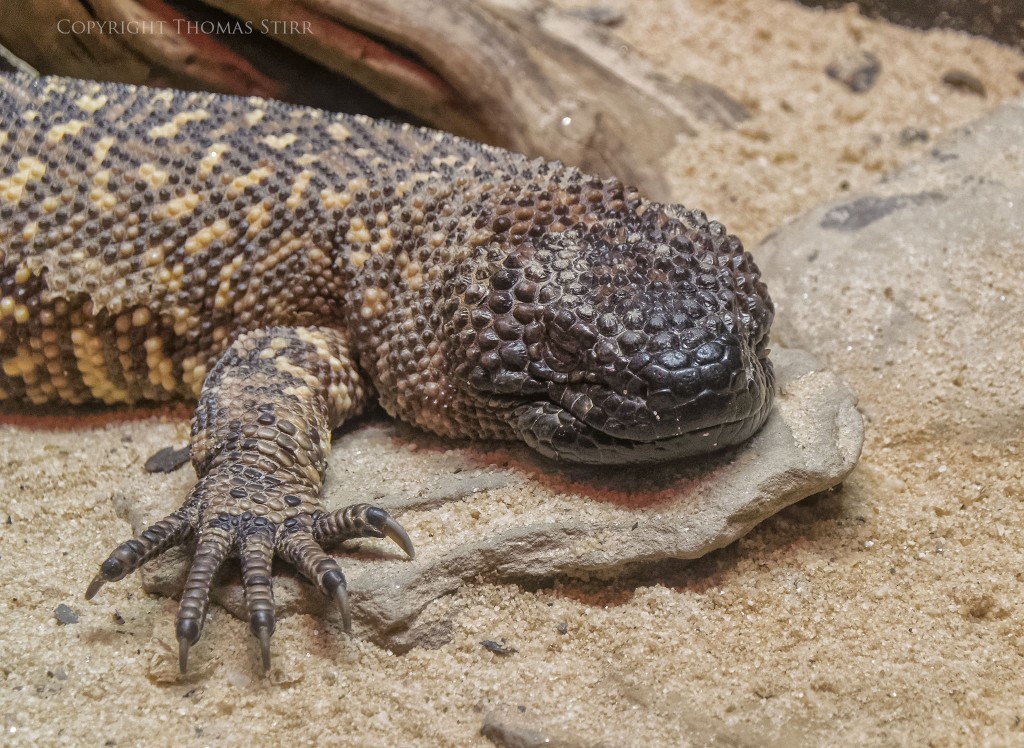
All of the images in this article were captured hand-held in available light. I used AF-S with single point auto-focus for all of the images.
My intent is to keep this photography blog advertising free. If you enjoyed this article and/or my website and would like to make a modest $10 donation through PayPal to support my work it would be most appreciated. You can use the Donate button below. Larger donations can be made to tom@tomstirr.com through PayPal.
Article and all images Copyright Thomas Stirr. All rights reserved. No use, duplication of any kind, or adaptation is allowed without written consent.


Maybe a stupid question, but how do you negate the reflections in the glass?
Hi Tom,
No such thing as a stupid question! One of the reasons that I used the 1 Nikon 10-100mm f/4-5.6 lens was its comparatively short minimum focusing distance. In many cases this allowed me to get my lens right up against the glass, thus eliminating glare. At other times I specifically wear a black, cotton cargo jacket so I can shoot with one hand while holding up the jacket in my other hand or draping over my other arm to eliminate glare.
Tom
Clever, I like the idea of using a black jacket to kill glare. Nice.
Hi Sean,
It is something that I stumbled on doing a while back…works reasonably well as long as there isn’t too much reflection that needs shielding. When I remember…its also good to bring a polarizing filter when visiting zoos and such.
Tom
I have always struggled in two things in a zoo,
low light reptile and moving fish ,
you nailed everything here ,
talking about Nikon CX system , people just moan about gear more than trying to get as much as they can from their cameras,
you are getting the most of this system Thomas ,
Thank you
Hi Mouhamad,
I’m glad you enjoyed the images – thanks for the support!
Tom
You are such a master with the V2! You really show us what can be done with a good camera, no matter the sensor size. I wish all those reviewers who panned the camera without giving it a chance could see what you do with it. It would have certainly silenced their objections done without a real experience with the V2. I love mine and am so happy that I am a doubter when it comes to many reviewers, especially in the magazines, etc.
I am a huge fan of your work! So keep up the good work!
Vern
Hi Vern,
It certainly looks like you are having as much fun with your V2 as I am! Thanks for the positive comment!
Tom
Tom’s beautiful work, particularly with the CX 70-300, made me want a V but I couldn’t justify the cost of a V3 and the old sensor in the V2 (despite how good Tom is with it) was a turn off. I hope the 1 series isn’t dead yet, I’d like to see the new DL’s sensor (or the J4’s sensor) in a V4 body with the CX 70-300 – it’d be a lot easier to handle than my D7100 + Tamron 150-600.
Hi Sean,
The J4 has the same sensor that is in the V3…and after testing the V3 I did not feel that there was sufficient difference to make an investment in the V3. If Nikon does bring out a V4 or V5 in the future I think it will have the 20.8MP BSI sensor that is in the J5. I’d actually like to see Nikon reduce the number of megapixels in the sensor for a V4/V5 down 16MP. With BSI technology that should allow for better low light performance as well as better dynamic range and colour depth than is found with the 20.8MP BSI sensor used in the J5 and DL series cameras.
Tom
‘as the effects of soiled glass partitions could be reduced’. Next time, ask the keepers to remove the glass and you won’t have the problem. Should also clear the crowds a bit.
Hi Ray,
lol…good point…I would imagine that the crowds would be non-existent since many of the enclosures house venomous snakes!
Tom